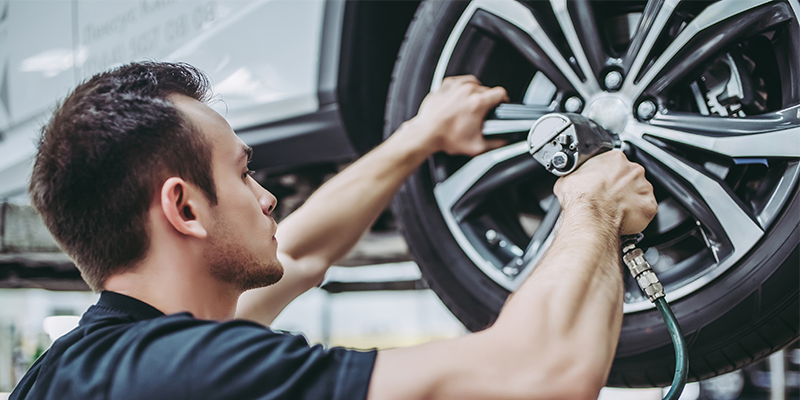During my 30-plus years of installing aftermarket parts, the disconnect between supplying technical information at the jobber level and installing the products he sells has become increasingly puzzling.
Each year, the aftermarket spends millions of dollars replacing perfectly good fuel pumps, alternators, starters, batteries, ignition modules, computers and just about anything else associated with the invisible forces of electricity.
Many stores replace perfectly good parts just to maintain “good customer relations.” After all, no store can afford to lose a regularly paying customer over an occasional technical disagreement. And, most importantly, most stores replace these parts because they can’t supply answers to a DIY or professional installer’s questions.
The result of poor communication between supplier and installer contributes to some aftermarket electrical parts costing as much as 50% more than the OE part. Whether it’s sold at a DIY or professional level, the cost of an electrical part is soaring due to warranty returns resulting from misdiagnosis or misinstallation problems.
The OE Perception
Worse still, many service professionals are turning to OE suppliers for a perceived difference in quality and a real-world savings in the cost of the part itself. My own OE purchases, for example, have risen from less than 5% of wholesale purchases 10 years ago to as much as 30% now. A few nameplate specialty shops buy 100% OE replacement parts.
The reasons for buying OE are a mixed bag, with availability, quality and price being the primary motivators.
Of course, most professionals realize that a limited-volume aftermarket part may simply be a re-boxed OE component sold at a higher than OE price. For me, the higher price isn’t a problem if the part is immediately available and carries a solid aftermarket warranty. Living in a rural area, I’ll gladly pay the higher price than wait for a day or perhaps two days for a UPS delivery from an out-of-town dealership.
Product Training
With that said, today’s vehicles are the most complex ever made. Due to computer modeling at the engineering level and advanced manufacturing techniques, component designs and operating strategies have proliferated to the point that only the most specialized of technicians can keep pace with all of the technical information that comes with each model of vehicle passing through a service bay.
Aftermarket distributors have traditionally responded to the demands of changing technology by providing an occasional one or two-night training class presented at a local jobber store. In the yesteryear of technology, vehicle platforms generally lasted at least five years. Major technical innovations such as alternators replacing generators and ignition modules replacing distributor contact points were considered technical milestones rather than a day-to-day occurrence.
Today, the speed of technology has progressed from a glacial to express-train velocities. While extremely valuable, jobber clinics continue to be plagued by poor attendance and hampered by increasing amounts of instructor preparation time. To illustrate, a trainer must not only discuss the conventional relay-controlled electric fuel pumps, he must also be prepared to discuss pulse-width modulated electric fuel pumps.
In addition, he must be prepared to discuss the technicalities of alternators, but also be prepared to discuss the technicalities of the computer or PCM operating strategies that might control alternator operations. Clearly, the sheer volume of information often exceeds the modest time constraints of the conventional jobber training clinic.
Manufacturer Information
Of course, the real issue in helping a technician properly use a manufacturer’s product to solve a vehicle problem is the dissemination of technical information from manufacturer to jobber. Aside from the “generic” installation instructions included with most new and remanufactured rotating electrical products, very little information is released that will help the mechanic perform a diagnostically based installation of the product.
I should be clear that manufacturers and remanufacturers are the ones most likely to understand why a component fails and what the underlying cause for the installation or warranty problem might be. An excellent example is the relationship between the battery and the alternator. In the simplest of terms, the underlying reason for alternator failure is because the alternator is working “overtime” to charge what it “sees” as a dead battery.
A tech sheet covering OE battery specifications and starting/charging system test procedures would inform even the least-skilled amateur or professional installer how the alternator is affected by other parts in the starting/charging system and how they should be tested.
Similarly, I recently installed an aftermarket Toyota throttle switch only to find that the closed-throttle resistance reading far exceeded the published specification. The maximum spec was 800 ohms; the new sensor produced 1,600 ohms.
Would the extra resistance in the aftermarket switch make a difference? I didn’t know, so I opted for a warranty replacement because I wasn’t willing to risk diagnosing problems caused by an out-of-specification part.
On a more positive note, I was recently surprised to find an excellent set of application-specific instructions included with a replacement timing belt. The tech sheet included the specific replacement procedure, torque specifications, belt routing illustration, tensioner test procedure and estimated replacement time for the timing belt application. This information sheet saved me the time of accessing an electronic information system and printing the data as required, not to mention mistakes that might have been made had the information not been available.
Need For Information
Let’s not underestimate the need for over-the-counter information. Good parts professionals are overwhelmed each day with technical questions concerning the diagnosis and installation of parts. To illustrate, let’s look at an example of an installer having a problem with a common part like a mass airflow (MAF) sensor.
The installer should know that some MAF sensors generate a voltage input to the PCM and some generate a frequency input to the PCM. Either input can be measured with a professional, 10-meg ohm impedance volt-ohm meter.
The MAF sensor usually fails because of oil, paper, dirt or debris contamination.
The voltage-based sensors like those used in Ford products usually store a P0171 and P0174 lean fuel mixture diagnostic trouble code when they become contaminated. Frequency-based sensors like those used in General Motors’ products usually store a MAF-related diagnostic trouble code in the PCM’s diagnostic memory.
Neither type of sensor will survive if the air filter housing allows dirt to by-pass the air filter or if an over-oiled aftermarket performance air filter contaminates the filter media. This somewhat basic information is necessary for a successful diagnosis and installation of the product, but it’s also information that most countermen shouldn’t be expected to know.
Another area of need is in brake friction sales. One advance is the inclusion of discard or minimum brake rotor thickness in the brake cataloging. One area still lacking is the performance data and application recommendations for various blends of brake friction materials. In days past, most mechanics were presented a choice of “standard,” OE-equivalent or “premium-grade” brake friction materials.
Today, brake friction materials are designed with numerous performance parameters in mind including noise, longevity, stopping power and reduction of brake dust. A friction lining that might serve very well in a fleet application might create too much noise and dust for a consumer application. All too often, even the most professional mechanic finds the array of choices daunting, to say the least. Here again, a counterman shouldn’t be expected to understand the nuances of the product, but the information itself should be available if requested.
Information Dissemination
Quite frankly, I believe application-specific diagnostic and installation information could be more efficiently disseminated by simply including a technical information sheet in every box containing an aftermarket electrical product. Sure, such an undertaking would mean that the supplier or manufacturer would spend time and money gathering and editing data to include on the application-specific installation sheet. But the investment would not only increase sales for the aftermarket jobber, but would return multiples in warranty and public relations cost savings.
In addition, many of the hard-copy technical bulletins supplied to jobbers could be more efficiently disseminated electronically and distributed over the parts counter. Other technical information could be condensed and re-written in everyday English for general consumption.
Here again, the cost of over-the-counter distribution of technical information would be offset by a lower warranty cost and a more competitive and credible position in wholesale parts distribution.













